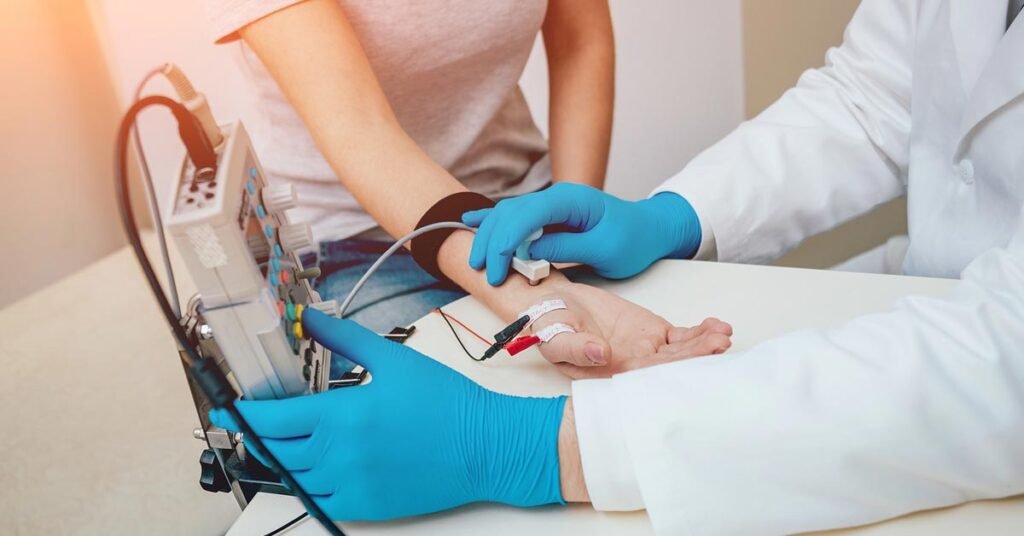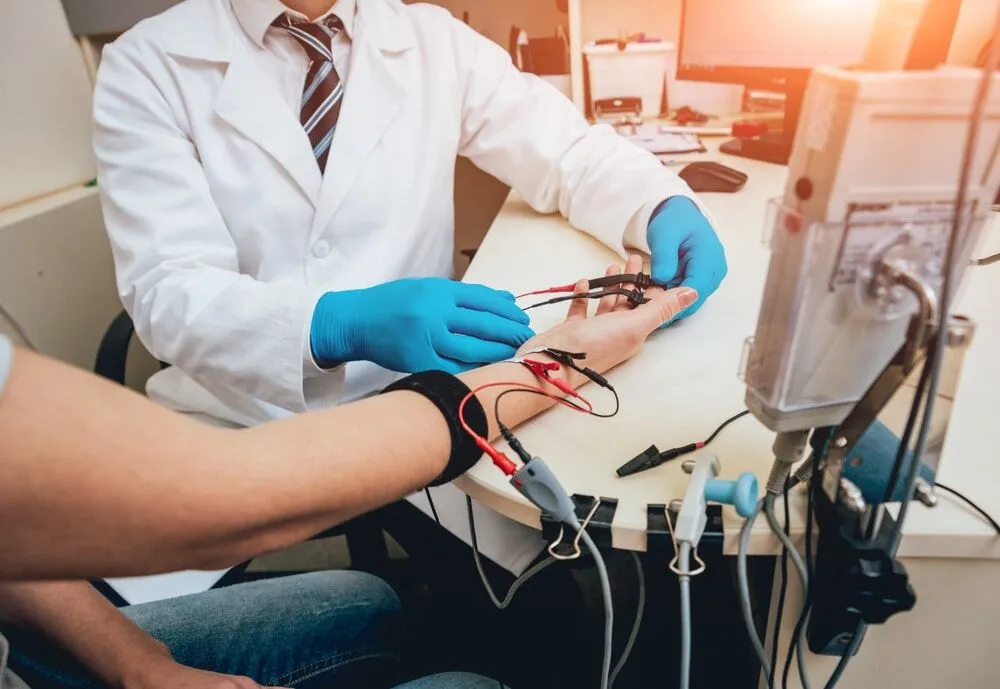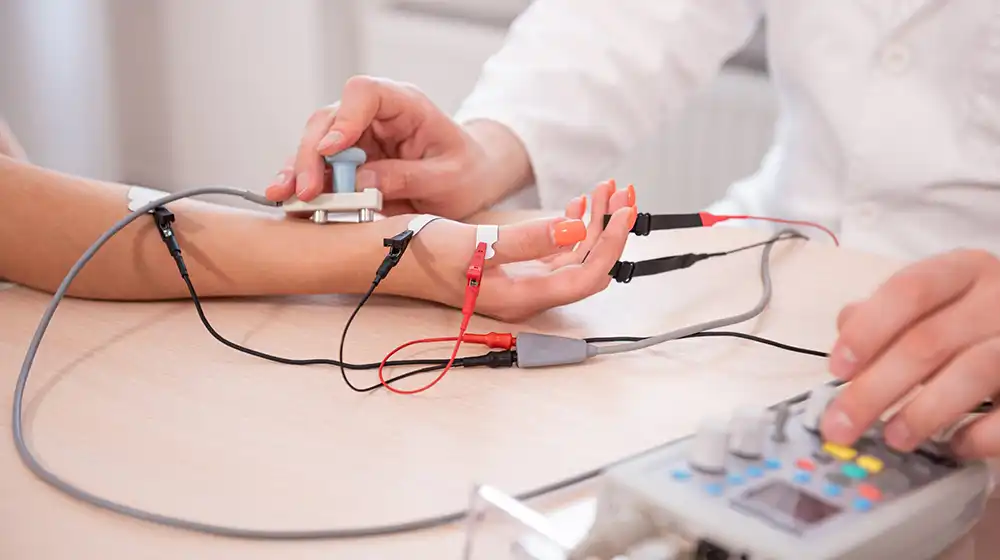Can I Take Oxycodone Before an EMG?
If you’re scheduled for an EMG (electromyography) test and you’re managing pain with oxycodone, you might wonder, “Can I take oxycodone before an EMG?” Understanding the implications of taking pain medication before this diagnostic procedure is essential for accurate results and your overall safety. This guide will provide a detailed exploration of the topic, addressing how oxycodone may affect EMG results, when it is safe to take it, and what you should discuss with your healthcare provider.
What is an EMG?
An electromyography (EMG) test evaluates the health of muscles and the nerves controlling them. It’s a diagnostic tool commonly used to assess conditions such as:
- Neuropathy: Nerve damage.
- Radiculopathy: Nerve root compression or irritation.
- Muscle Disorders: Such as myopathy or muscular dystrophy.
How Does an EMG Work?
- Insertion of Electrodes: Small needles (electrodes) are inserted into muscles to measure electrical activity.
- Nerve Stimulation: Electrical signals are recorded to evaluate how nerves and muscles interact.
- Data Analysis: A neurologist analyzes the patterns to detect abnormalities.
The test can cause mild discomfort, as it involves inserting needles into muscles and applying small electrical impulses.

What is Oxycodone?
Oxycodone is a prescription opioid pain medication used to manage moderate to severe pain. It works by binding to opioid receptors in the brain and spinal cord, altering how the body perceives and responds to pain.
Common Uses of Oxycodone
- Post-surgical pain
- Injury-related pain
- Chronic pain conditions
Forms of Oxycodone
- Immediate-release (IR): Quick relief, lasting 4–6 hours.
- Extended-release (ER): Long-lasting pain relief for chronic conditions.
Can You Take Oxycodone Before an EMG?
The answer to can I take oxycodone before an EMG is yes, it is generally safe for managing pain, but it should be done under the guidance of your healthcare provider and also depends on several factors, including your pain levels, and the specific purpose of the EMG.
1. Pain Management Considerations
If you’re experiencing significant pain, your doctor may allow you to take oxycodone before the test to ensure your comfort during the procedure. An EMG can be uncomfortable, and untreated pain may make it harder to tolerate.
2. Impact on EMG Results
Oxycodone generally does not interfere with EMG results. The test measures the electrical activity of muscles and nerves, which is unlikely to be affected by opioids. However:
- High doses of oxycodone may cause sedation, which could affect your ability to follow instructions during the test.
- Muscle relaxation caused by oxycodone may slightly alter the baseline activity recorded during the EMG.
3. Doctor’s Recommendation
Always follow your doctor’s instructions regarding medications before an EMG. They may advise adjusting the timing or dosage of oxycodone to ensure accurate results and a comfortable experience.
When Should You Avoid Taking Oxycodone Before an EMG?
There are specific scenarios where taking oxycodone before an EMG may not be advisable:
- Neuropathy Assessment:
If the test is being conducted to evaluate neuropathy or nerve-related pain, oxycodone may temporarily mask symptoms, potentially influencing the interpretation of results. - High Doses or Combination Medications:
Taking high doses of oxycodone or combining it with other sedatives (e.g., benzodiazepines or alcohol) may affect muscle responsiveness or your ability to cooperate during the procedure. - Potential for Sedation:
If oxycodone causes excessive drowsiness or lethargy, it may interfere with your ability to actively participate in the test, such as contracting muscles when prompted.

What to Discuss With Your Doctor Before the EMG
Before the test, consult your doctor about your medications and pain management needs. Key questions to ask include:
- Should I take oxycodone before the test?
Your doctor may recommend taking a lower dose or skipping it entirely if it could interfere with results. - How can I manage pain during the procedure?
If pain is a concern, your doctor may suggest alternative pain relief methods, such as acetaminophen, which is less likely to interfere with the test. - Can I resume oxycodone after the EMG?
In most cases, you can resume your regular medication schedule after the procedure.
How to Prepare for an EMG
Proper preparation can help ensure accurate results and minimize discomfort.
1. Medication Guidelines
- Inform your doctor about all medications you are taking, including oxycodone, over-the-counter drugs, and supplements.
- Follow any specific instructions about adjusting or skipping medications before the test.
2. Avoid Stimulants and Depressants
- Refrain from consuming caffeine, alcohol, or sedatives on the day of the test, as these substances may influence muscle or nerve activity.
3. Wear Comfortable Clothing
- Choose loose-fitting clothes that allow easy access to the areas being tested.
4. Stay Relaxed
- Nervousness or anxiety can increase muscle tension, potentially affecting results. Practice deep breathing or relaxation techniques if you’re feeling apprehensive.

What to Expect During the EMG
Step-by-Step Overview
- Preparation:
The technician will clean the skin and insert small needle electrodes into the muscles being tested. - Muscle Testing:
You may be asked to relax or contract your muscles during the test. - Electrical Stimulation:
A small electrical current may be applied to evaluate nerve function. - Completion:
The procedure typically lasts 30–60 minutes, depending on the areas being tested.
Pain or Discomfort
The level of discomfort varies but is usually mild to moderate. If you’ve taken oxycodone beforehand, it may help reduce this discomfort.
Post-EMG Considerations
After the EMG:
- Resume your regular medication schedule, including oxycodone, unless advised otherwise by your doctor.
- You may experience mild soreness or bruising at the electrode sites, which usually resolves within a day or two.
- Inform your doctor if you notice any unusual symptoms, such as persistent pain or swelling.
Alternative Pain Management During an EMG
If taking oxycodone is not recommended before your EMG, consider these alternatives:
- Acetaminophen (Tylenol):
A non-opioid pain reliever that does not interfere with nerve or muscle activity. - Topical Pain Relievers:
Products containing lidocaine or menthol may provide localized relief without affecting the test results. - Relaxation Techniques:
Deep breathing, meditation, or guided imagery can help manage discomfort and anxiety during the procedure. - Scheduling Adjustments:
If your pain is severe, discuss scheduling the EMG at a time when your pain is better controlled.

Conclusion
Taking oxycodone before an EMG is generally safe for managing pain, but it should be done under the guidance of your healthcare provider. While oxycodone does not directly interfere with the test results, its effects on sedation and muscle activity may influence your ability to cooperate during the procedure. Always discuss your medication regimen with your doctor to ensure accurate test results and a comfortable experience.
By preparing properly and following your doctor’s advice, you can confidently undergo an EMG while managing your pain effectively.
1. Will oxycodone affect the accuracy of an EMG?
In most cases, oxycodone does not interfere with EMG results. However, high doses may cause sedation or muscle relaxation, which could influence the test.
2. Can I take a lower dose of oxycodone before the test?
Yes, taking a smaller dose may help manage pain without significantly affecting the procedure. Always consult your doctor first.
3. What if I forget to mention that I took oxycodone before the EMG?
Inform the technician immediately. They can note this information, as it may help interpret the results accurately.
